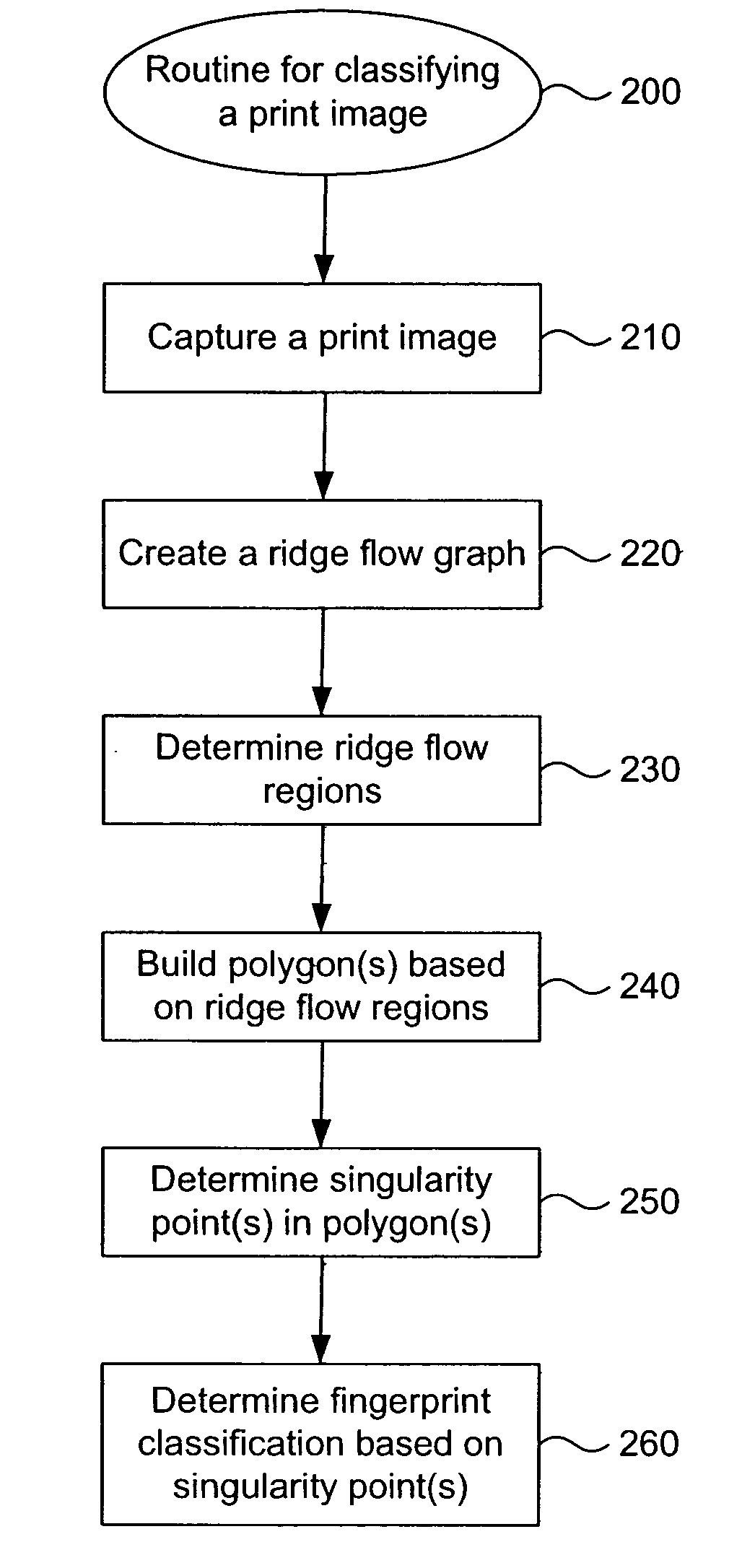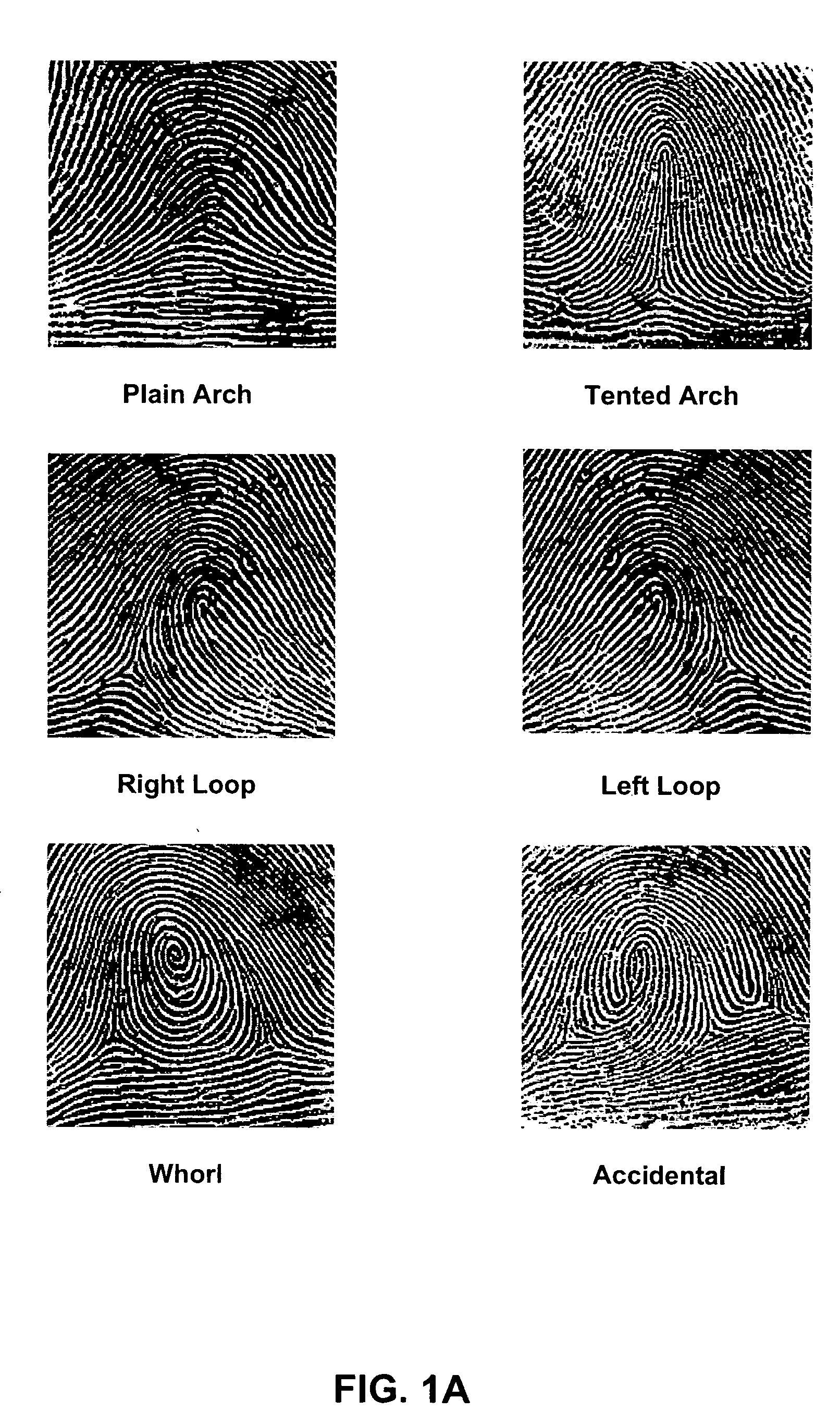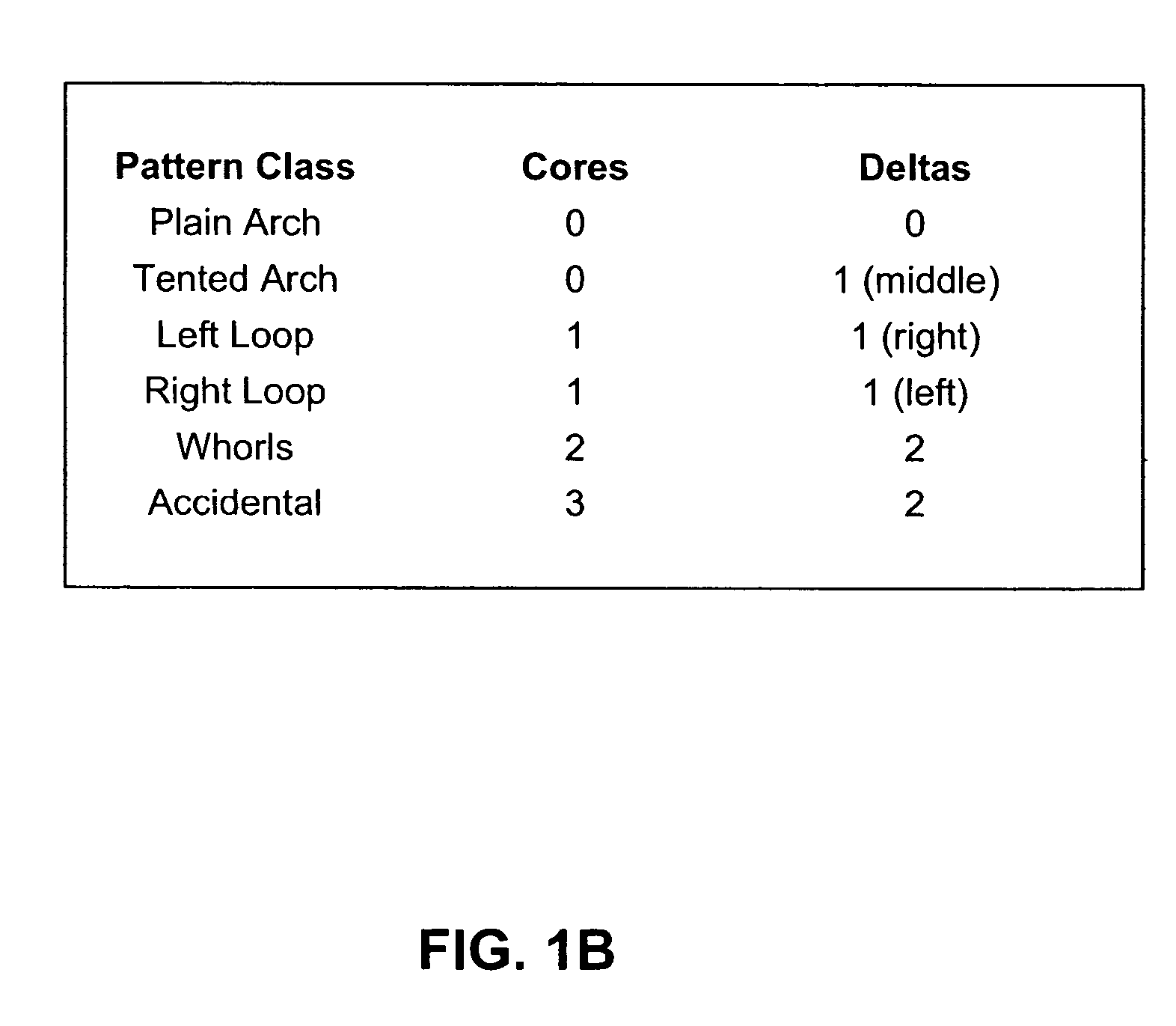Polygonal ridge flow classification
a polygonal ridge and classification technology, applied in the field of print image analysis, can solve the problems of early identification of unsuitable print images, and achieve the effects of easy identification, fast classification, and meaningful visual feedback
- Summary
- Abstract
- Description
- Claims
- Application Information
AI Technical Summary
Benefits of technology
Problems solved by technology
Method used
Image
Examples
Embodiment Construction
)
[0030] Polygonal Ridge Flow Classification
[0031] Overview
[0032] An embodiment of the present invention provides a process in which a ridge flow analysis of a fingerprint image can be used to determine a fingerprint classification. Areas of like valued ridge flow are collected as regions and said regions are then joined together when edges of the regions exist. These vertices are then reduced to for polygons including, but not limited to, minimal circular-like or regular polygons. Each polygon is characterized by the number of vertices that create them. Polygons that have a predetermined number of vertices (i.e., eight vertices for the case of 8 ridge flow directions) and contain one value from each of the possible ridge flow values from the ridge flow table are deemed to be a singularity. In one example, these singularities are then further identified based on a clockwise or counter-clockwise direction. Clockwise singularities are identified as cores and counter-clockwise singula...
PUM
 Login to View More
Login to View More Abstract
Description
Claims
Application Information
 Login to View More
Login to View More - R&D
- Intellectual Property
- Life Sciences
- Materials
- Tech Scout
- Unparalleled Data Quality
- Higher Quality Content
- 60% Fewer Hallucinations
Browse by: Latest US Patents, China's latest patents, Technical Efficacy Thesaurus, Application Domain, Technology Topic, Popular Technical Reports.
© 2025 PatSnap. All rights reserved.Legal|Privacy policy|Modern Slavery Act Transparency Statement|Sitemap|About US| Contact US: help@patsnap.com



